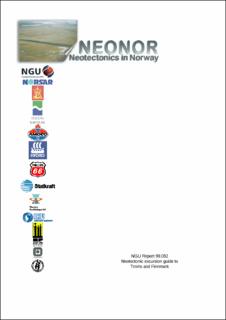| dc.description.abstract | This report constitutes the itinerary for a two-day field excursion to postglacial faults and rock avalanches in northern Troms and western Finnmark. Day 1 has three stops along the route from Tromsø to Nordmannvikdalen in Kåfjord, Troms. Day 2 has two localities along the Stuoragurra fault in Masi. The Nordmannvikdalen and Stuoragurra faults are part of the Lapland province of postglacial faults which consists of nine reverse faults and two normal faults in northern Fennoscandia. The faulting was most likely associated with major earthquakes with magnitudes of 7-8 on Richters scale. \rThe reverse Stuoragurra fault has a length of 80 km and a scarp height of maximum 7 metres. The fault is located within the regional Mierujavri Sværholt Fault Zone which is of Proterozoic age. The fault cross-cuts glaciofluvial deposits and is consequently younger than 9600 C14 yars. During 1998, two trenches were made across the Stuoragurra Fault, between Kautokeino and Masi. For the first time, the fault was directly observed in the bedrock. The fault did not penetrate the overlying glacial materials, but rather folded them, forming a blind thrust. Large liquefaction and other deformation structures were found in the glaciofluvial sediments in both trenches. Veins of angular and subangular pebbles from the local bedrock (Masi Quartzite) penetrate more than 10 metres laterally from the thrust plane and into the sediments in the footwall. It is thought that these veins were possibly injected during the fault activity. Deformational structures seen in the trench can be explained as a result of one major fault event. \rThe normal Nordmannvikdalen fault has a length of 1.5-2 km and a scarp height of one metre. The fault is most likely due to a deep-seated deformation, but a gravitational origin can not be ruled out. Two rock avalanches in Nordnesfjellan and Manndalen in Lyngenfjorden, northern Troms are described. The avalanches in the area were most likely triggered by the large earthquakes which were formed during the postglacial faulting. | |

